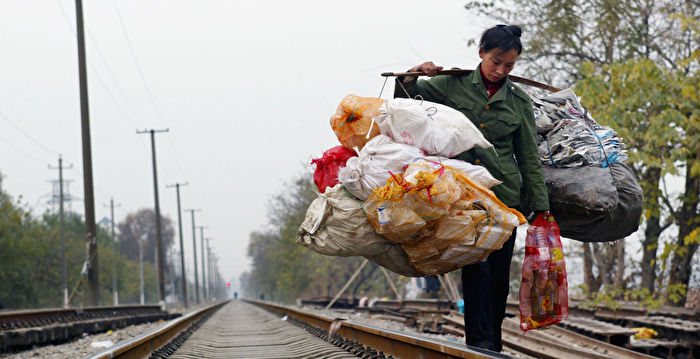[Epoch Times November 30, 2021](The Epoch Times reporter Cheng Jing reported) Cai Fang, an official of the Central Bank of the Communist Party of China, recently stated that the Gini coefficient needs to be lowered to below 0.4 to achieve “common prosperity”. This is the first time a CCP official revealed The goal. The current official data shows that China’s Gini coefficient is still as high as 0.47.
According to comprehensive media reports, Cai Fang, a member of the Central Bank’s Monetary Policy Committee, stated at the China Caijing Annual Conference 2022 that to achieve common prosperity, the Gini coefficient, which measures the degree of income inequality, needs to be reduced to below 0.4, that is, China’s Gini coefficient should be reduced from The current 0.47 will drop to 0.4 in 2025, and it will approach 0.35 in 2035.
According to data from the National Bureau of Statistics of the Communist Party of China, the Gini coefficient of China’s income reached the highest point of 0.49 in 2008 and will still be as high as 0.47 in 2020. It took the CCP more than ten years to reduce the Gini coefficient of China’s income by 0.02. At present, China’s income Gini coefficient is much higher than the 0.314 average of developed countries estimated by the Organization for Economic Cooperation and Development (OECD) this year.
Quartz data shows that the current Gini coefficient in the United States is 0.39, the United Kingdom is 0.37, South Korea is 0.36, Canada is 0.31, France is 0.29, Norway is 0.26, and Slovakia is 0.22.
The Gini coefficient is an international measure of the degree of difference in the income distribution of a country’s residents. The value ranges from 0 to 1. 0 means complete equality and 1 means complete inequality. Internationally, 0.4 is usually regarded as the warning line of income distribution gap, and more than 0.4 means excessive concentration of wealth, which is prone to social confrontation and turbulence.
Many analysts believe that, given that the CCP’s economic data serves politics, the gap between the rich and the poor in China is actually more serious.
The Wall Street Journal quoted Credit Suisse Group statistics showing that in 2020, China’s richest 1% of people own about 30% of their wealth, an increase of 10 percentage points from 2000. In the United States, the proportion of wealth controlled by the richest 1% only increased by 2.5 percentage points.
According to data from the Shanghai-based research company Hurun Report, more than half of the world‘s new billionaires in 2020 will come from China, and Chinese billionaires will surpass the United States, becoming the first country to have more than 1,000 billionaires.
However, Chinese Premier Li Keqiang disclosed in May 2020 that China’s 600 million people have a monthly income of only 1,000 yuan, and an average annual income of 30,000 yuan per capita.
After Xi Jinping’s high-profile promotion of common prosperity in August, the authorities have not yet set a national digital target, and Cai Fang’s remarks have attracted widespread attention. Cai Fang once again mentioned the idea of ”dividing the cake”, saying that various means and methods of the first distribution, redistribution, and third distribution should be used.
Cai Fang also said that the Gini coefficient should fall below 0.4, and no country in the world can achieve it by initial allocation. The Gini coefficient of OECD developed countries is “after the redistribution of taxes and transfer payments, it generally drops below 0.4. “.
Quartz Finance and Economics published an analysis that Beijing is betting that it can consolidate its power by reducing income inequality while continuing to accelerate China’s economic growth engine. However, the country’s super-rich have noticed that so far, the government has cracked down on industries ranging from tech giants, luxury goods investors to online influencers.
The article quoted a critic’s analysis that common prosperity is just a “huge political pork barrel” for Beijing supporters.
Editor in charge: Hu Yulong#
.
